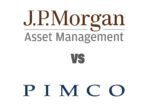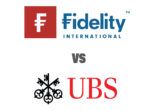High-yield bonds remain an attractive asset category in the current environment of below-trend growth and very moderate inflation, but we have gradually adopted a more conservative stance as the rally in high yield slows.
This risky asset class requires vigilance as the Fed starts its tightening cycle and liquidity risk is not fully reflected in the market.
However, the broader environment remains favorable. The recent ECB easing measures (covered bond buying and targeted long term refinancing operations) are an additional boost for risky assets and the European high yield market in particular.
In the meantime, the search for yield will continue, albeit at a more measured pace, as the global high yield market is less assured of central bank easy money. The European market is likely to be the main beneficiary in the ongoing search for yield as it has higher ratings than the US, suggesting that the search has yet to penetrate to the lowest-rated borrowers in the euro area.
From this perspective, the European market is preferable to the US. This also plays into our theme of divergence in monetary policy. There is likely to be more high yield issuance from previous borrowers in the euro loan market, especially as the ECB is supporting parts of the fixed income market.
Although risk perception is currently strong, we think investors are still willing to pay a relatively high price for additional carry. Coupons are still relatively attractive, especially after the spread widening we have seen.
In relative terms, spread widening has also made high yield better value than investment grade.
HY corporate bonds attractive
The prospects for high-yield corporate bonds remain favorable on the basis of fundamental factors.
Default rates continue to decline and the market expects this trend to continue in 2015. Recovery figures are also high at the moment. Low interest-rate policies in recent years have given businesses sufficient opportunity to issue longer-term bonds at favorable rates.
Default rate expectations seem rather optimistic for the US market, given that energy companies now form an increasingly large part of the high-yield bond market and energy price falls to break-even levels will pose a threat. This will be particularly apparent if the abundance of supply prevents stabilisation in oil prices, lowering pricing power.
Therefore, we also see limited refinancing risks in 2015. The cash flow of companies that issue high-yield bonds remains on target, thanks to an expected pick up in cyclical growth in developed markets, enabling them to continue to finance interest charges relatively easily.
Less reward for risk
This asset class is losing some of its glamour. The compensation for credit risk has dropped to 438 basis points and therefore lies below the 10-year average of 610 basis points.
There are a number of factors that will inhibit further index spread compression from current levels. In the first place, financial stress is closely related to high yield spread widening and we expect a return to more normal asset-specific volatility next year.
Secondly, the expected default rates appear very rosy compared to comparable economic cycles in the past, but there is now a risk of higher defaults in some pockets of the market, despite the continuing economic recovery.
Thirdly, if higher value segments of the market are affected by contagion from defaults, low market liquidity could exacerbate problems. Trading activity is much more volatile for high yield ETFs during stress periods than it is for investment grade bonds. This volatility will also increase liquidity risks.
Fourth, the issuance of covenant-lite bonds has surged, as a result of the search for yield which keeps bargaining power on the supply side. But covenant-lite issuance does not equal bad credit quality. Instead, sometimes issuers with stronger fundamentals are able to push for fewer covenants.
Taking into consideration the somewhat more favorable valuation of equities compared to high-yield bonds, we prefer equities in 2015.
Within fixed income, we prefer high-yield bonds to government bonds in developed and emerging markets because of the additional return on credit risk.
















